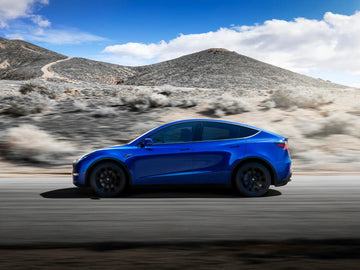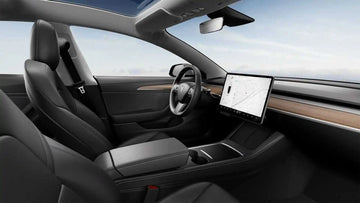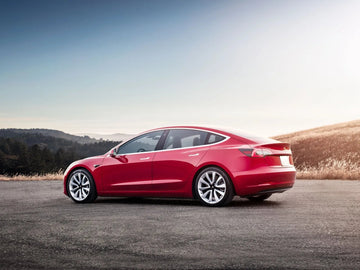Tesla’s Autopilot and Full Self-Driving capabilities are at the forefront of automotive technology, offering drivers unprecedented convenience and safety. This guide provides an in-depth look at these features, their functionality, and best practices for use. Whether you're a current Tesla owner or considering a purchase, understanding how Autopilot and Full Self-Driving work can help you maximize their potential and drive with confidence.
Table of Contents
- Introduction to Autopilot and Full Self-Driving
-
Standard and Optional Features
- Autopilot
- Full Self-Driving Capability
-
How to Use Autopilot and Full Self-Driving
- Enabling and Engaging Features
- Traffic-Aware Cruise Control
- Autosteer
- Navigate on Autopilot
-
Advanced Features
- Auto Lane Change
- Autopark
- Summon and Smart Summon
- Traffic Light and Stop Sign Control (Beta)
- Active Safety Features
- Best Practices and Safety Tips
- Conclusion
- Frequently Asked Questions (FAQ)
1. Introduction to Autopilot and Full Self-Driving
Autopilot is an advanced driver assistance system that enhances safety and convenience on the road. With multiple external cameras and powerful vision processing, Tesla Vision delivers these features without the need for radar. Autopilot comes standard on all new Teslas, while Full Self-Driving (FSD) capability offers additional features for those seeking a more autonomous driving experience.
2. Standard and Optional Features
Autopilot
Autopilot includes:
- Traffic-Aware Cruise Control: Adjusts your vehicle’s speed based on surrounding traffic.
- Autosteer: Assists in steering within a clearly marked lane and uses Traffic-Aware Cruise Control.
Full Self-Driving Capability
In addition to Autopilot features, FSD includes:
- Navigate on Autopilot: Guides your vehicle from on-ramp to off-ramp on highways, including lane changes and exits.
- Auto Lane Change: Helps in moving to an adjacent lane on the highway.
- Autopark: Automates parallel and perpendicular parking.
- Summon: Moves your vehicle in and out of tight spaces using the mobile app or key.
- Smart Summon: Navigates more complex environments to come find you.
- Autosteer on City Streets
- Traffic and Stop Sign Control (Beta): Identifies and responds to stop signs and traffic lights.
3. How to Use Autopilot and Full Self-Driving
Enabling and Engaging Features
Before using Autopilot, read your Owner's Manual for detailed instructions and safety information. Autopilot features like Autosteer, Navigate on Autopilot, and Summon must be enabled in the Autopilot Controls menu within the Settings tab.
Traffic-Aware Cruise Control
Engage by pulling down once on the cruise control stalk (Model S/X) or gear selector stalk (Model 3/Y).
Autosteer
Engage by pulling the stalk twice towards you (Model S/X) or gear selector stalk twice downwards (Model 3/Y). A blue steering wheel icon indicates engagement.
4. Advanced Features
Auto Lane Change
Enable through the Autopilot Controls menu and engage by activating the turn signal while Autosteer is active.
Autopark
Detects parking spots at low speeds and assists in parking. Activate by shifting to ‘Reverse’ and pressing ‘Start Autopark’ on the touchscreen.
Summon and Smart Summon
Operate using the Tesla app. Summon moves the car forwards or backwards, while Smart Summon navigates the vehicle to a specified location.
5. Traffic Light and Stop Sign Control (Beta)
This feature, in beta, identifies and stops at traffic lights and stop signs. Engage by enabling it in the Autopilot Controls menu and using Traffic-Aware Cruise Control or Autosteer.
6. Active Safety Features
Tesla vehicles come standard with several active safety features:
- Automatic Emergency Braking: Applies brakes to avoid collisions.
- Forward Collision Warning: Alerts of impending collisions.
- Side Collision Warning: Warns of potential side collisions.
- Obstacle-Aware Acceleration: Reduces acceleration when an obstacle is detected.
- Blind Spot Monitoring: Alerts during lane changes.
- Lane Departure Avoidance: Keeps the vehicle in its lane.
- Emergency Lane Departure Avoidance: Corrects the vehicle's path to avoid collisions.
7. Best Practices and Safety Tips
- Stay Alert: Always keep your hands on the wheel and be prepared to take control.
- Regular Updates: Ensure your vehicle's software is up to date.
- Proper Use: Follow all guidelines in the Owner’s Manual.
8. Conclusion
Tesla’s Autopilot and Full Self-Driving capabilities offer cutting-edge technology for a safer, more convenient driving experience. By understanding and properly using these features, you can enhance your driving efficiency and safety.
9. Frequently Asked Questions (FAQ)
-
What is the difference between Autopilot and Full Self-Driving? Autopilot includes basic driver assistance features, while Full Self-Driving adds advanced capabilities like Navigate on Autopilot and Smart Summon.
-
How do I engage Autosteer? Pull the cruise control stalk towards you twice (Model S/X) or the gear selector stalk downwards twice (Model 3/Y).
-
What is Traffic-Aware Cruise Control? It adjusts your vehicle’s speed based on surrounding traffic conditions.
-
Can my Tesla park itself? Yes, with Autopark, your Tesla can parallel and perpendicular park automatically.
-
How does Smart Summon work? Smart Summon uses your phone’s GPS to navigate your Tesla to a specified location, maneuvering around obstacles as necessary.




















































